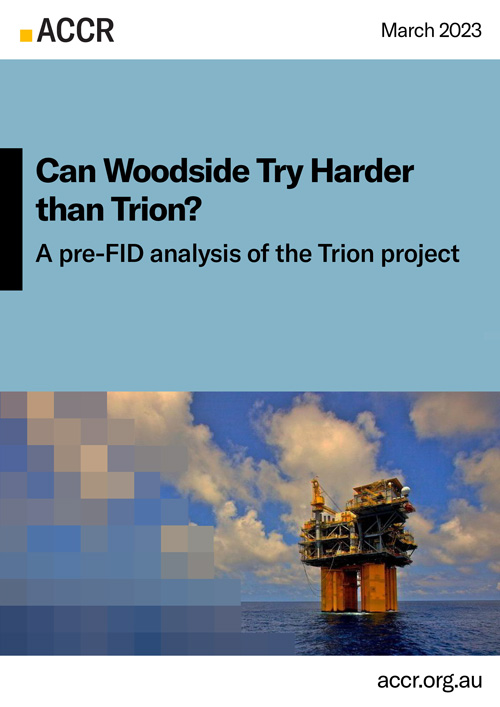Publication Can Woodside Try Harder than Trion?
Trion is a greenfield oil development in the Gulf of Mexico. BHP purchased 60% of Trion from Mexican government-owned Pemex and became the operator in 2016. It became part of Woodside’s portfolio in 2022, when Woodside merged with BHP’s petroleum assets. Woodside is targeting a Final Investment Decision (FID) in 2023.
ACCR has built an emissions and cash flow forecast of Trion and found that weak economics, high emissions and significant downside risk means Woodside does not have a strong case to support a positive FID on Trion.
It is not obvious who the winner is if Trion goes ahead. It offers at best modest value to investors, and the high emissions will further jeopardise Woodside’s already-lagging ability to reposition for a rapidly decarbonising economy.
Our analysis indicates that even when valuing Trion based on an Internal Rate of Return (IRR) - which does not adjust for country risk - the project does not meet the hurdle target of >15% set by Woodside for offshore oil projects. When adjusting for country risk, the Discounted Cash Flow (DCF) valuation suggests limited valuation upside of $A0.23-0.35 per share or around 1% of Woodside’s market capitalisation.
There are added risks that have not been fully captured in either the IRR or DCF valuation, and some risks for which it is unclear how they have been incorporated. ACCR recommends that investors factor the following into their valuation analysis:
- Country risk. Woodside does not have experience operating in Mexico. The country risk has not been reflected in the hurdle rate, which has been independently estimated to add 2.5% to the cost of capital.
- Partner risk. Pemex has a poor financial, safety and operating record and faced allegations of past corruption.
- Production risk. The valuation is based on contingent resources, rather than reserves. The Gulf of Mexico also faces extreme weather events that can reduce production, and these will escalate under climate change.
- Oil Price risk. The valuation has been based on the forward Brent price, which is higher than the prices in the IEA’s Paris-aligned scenario.
- Capital expenditure risk. There is some ambiguity in the disclosed capital costs, specifically the carrying amount that Woodside will need to fund for Pemex.
- Licence risk. The current production licence expires in 2052, but the field is modelled to produce until 2066.
Of particular relevance for Australian tax-paying investors, such as super funds, there are no franking credits attached to the foreign income from Trion that is distributed to shareholders.
If developed, Trion would contribute 0.2 MtCO2e of scope 1 emissions and 9.4 MtCO2e of scope 3 emissions at peak production in 2030. This represents a 12% increase against Woodside’s current estimated emissions.
Instead of a high-risk, economically weak project, Woodside should consider alternative uses of capital such as increased new energy spend, or share buybacks.
Read the full report here.
Please read the terms and conditions attached to the use of this site.
